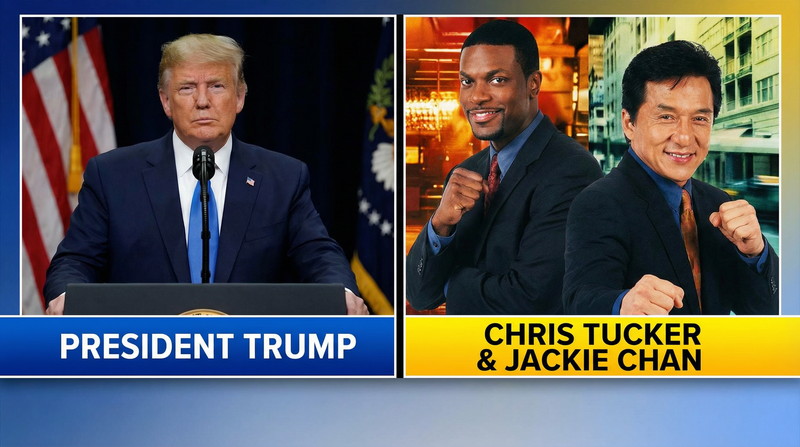Biometrics Boom: Face Scanning for Age Verification Raises Privacy Alarms
Rapid Adoption of Facial Recognition Sparks Debate Over Government Misuse and Data Security Risks August 24, 2025 WASHINGTON, D.C. — The rapid rise of biometric technologies, particularly facial recognition for age verification, is transforming how businesses and governments enforce age-restricted access, but it’s also igniting fierce debate over privacy,
Rapid Adoption of Facial Recognition Sparks Debate Over Government Misuse and Data Security Risks
August 24, 2025
WASHINGTON, D.C. — The rapid rise of biometric technologies, particularly facial recognition for age verification, is transforming how businesses and governments enforce age-restricted access, but it’s also igniting fierce debate over privacy, surveillance, and the potential for government overreach. From online platforms to brick-and-mortar stores, facial scanning is becoming a go-to tool for verifying age, driven by advancements in artificial intelligence (AI) and growing regulatory demands to protect minors. Yet, critics warn that the same technology could enable unprecedented government surveillance and data misuse, raising questions about whether the benefits outweigh the risks.
Biometric age verification systems, which analyze facial features to estimate or confirm a user’s age, are increasingly deployed across industries. Retailers like Asda and Southern Co-operative in the UK use live facial recognition cameras powered by companies like Yoti to verify purchases of age-restricted products such as alcohol and tobacco. In the U.S., the Transportation Security Administration (TSA) has rolled out facial recognition at 16 airports, including Atlanta and Miami, allowing travelers to verify their identity by scanning their face against a government-issued ID. Online platforms, including social media and gaming sites, are also adopting biometric tools to comply with laws like Ohio’s recent age assurance legislation, which requires parental consent for minors accessing certain content. Yoti, a leading provider, reported that its facial age estimation technology was used in over 1 million verifications globally in 2024 alone.
NEW 🚨 Outside supermarkets or in festival crowds, millions are now having their features scanned by real-time facial-recognition systems in the UK — the only European country to deploy the technology on a large scale
— Insider Paper (@TheInsiderPaper) August 24, 2025
https://t.co/vAq2bkEWl5
These systems rely on sophisticated AI algorithms that measure facial geometry—such as the distance between eyes or the shape of cheekbones—to create a unique “faceprint.” Tools like Yoti’s combine liveness detection, which distinguishes a live person from a photo or mask, with machine learning to improve accuracy. Other biometric methods, such as voice recognition and iris scanning, are also gaining traction, often integrated with multi-factor authentication for added security. Companies like Veridos and Aware are developing solutions that blend facial recognition with document verification, enabling seamless age checks at point-of-sale systems or online gateways. Amazon’s checkout-free stores, for instance, use AI-driven cameras to verify identities and ages, streamlining purchases but collecting vast amounts of biometric data.
While these technologies promise convenience and fraud prevention, privacy advocates are sounding the alarm. “Facial recognition is inherently intrusive,” said Jane Carter of the Center for Democracy & Technology. “Unlike passwords, you can’t change your face if the data is compromised.” The irreversible nature of biometric data is a key concern: a 2015 breach at the U.S. Office of Personnel Management exposed fingerprints of 5.6 million federal employees, highlighting the long-term risks of data leaks. Another breach at Biostar 2 exposed 27.8 million records, including facial recognition data, used by government agencies and banks. Such incidents underscore the vulnerability of centralized biometric databases, which could be targeted by hackers or misused by governments.
YouTube began rolling out an “age-estimation” AI model in the US that uses AI to determine if a user is under 18—regardless of the birthdate they’ve entered when signed up.
— NTD (@NTD_Live) August 21, 2025
NTD speaks to Jessica Melugin on why this feature could infringe on personal privacy and free speech. pic.twitter.com/i6En3NmOTm
The potential for government misuse is a growing fear. In the U.S., the lack of comprehensive federal regulation leaves a patchwork of state laws, with only Illinois’ Biometric Information Privacy Act (BIPA) allowing individuals to sue for improper biometric data use. Critics point to cases like the UK’s covert use of passport photos for facial recognition, as reported by privacy groups, which amassed a database of 150 million images without public consent. In China, facial recognition is widely used for public surveillance, raising concerns about authoritarian control. In the U.S., the Department of Homeland Security (DHS) employs facial recognition for border control and law enforcement, with 14 distinct use cases identified in a 2025 report. Posts on X have amplified fears, with users warning that unchecked government access could lead to mass surveillance or profiling, especially of marginalized communities.
Accuracy issues further complicate the picture. Facial recognition systems often struggle with darker skin tones, women, and nonbinary individuals, leading to higher false positive rates that can result in unfair denials or misidentifications. A 2024 report from the U.S. Government Accountability Office noted that misidentifications have already led to false arrests in criminal contexts. For age verification, inaccuracies could disproportionately affect certain demographics, undermining trust in the technology.
This is the moment the internet changed forever.
— Naomi Brockwell priv/acc (@naomibrockwell) August 23, 2025
Mandatory ID checks are being rolled out across the globe.
This isn’t about protecting kids. It’s about ending anonymity.
Here’s what’s happening, and how we fight back.https://t.co/OJUng7XBCahttps://t.co/Q1HyQ82hHn pic.twitter.com/jKam5C4UPc
To mitigate risks, experts advocate for privacy-focused solutions. Local processing, where biometric data is analyzed on a user’s device rather than sent to servers, reduces breach risks. Decentralized storage, using blockchain or tokenization, ensures data isn’t held in vulnerable central databases. Yoti and similar providers emphasize compliance with regulations like the EU’s General Data Protection Regulation (GDPR), which requires explicit consent and robust data protections. However, the Federal Trade Commission (FTC) warned in 2023 that companies failing to assess foreseeable harms or transparently disclose data use could violate consumer protection laws.
They're doing it again... Subtly programming the masses to believe that digital IDs and biometrics will make their lives easier and more convenient.
— Jason Bassler (@JasonBassler1) August 13, 2025
Don't fall for it! pic.twitter.com/ix2yWpEmBY
As biometric age verification expands, the balance between security and privacy remains precarious. Supporters argue it’s essential for protecting minors and streamlining services, but critics urge stronger regulations to prevent government overreach and data abuse. “The technology isn’t the problem—it’s how it’s used,” said Matthew Kugler, a privacy scholar. With tools like Yoti, Veridos, and Aware shaping the future of identity verification, the debate over biometrics is far from over, as citizens and policymakers grapple with safeguarding individual rights in an increasingly digital world.




